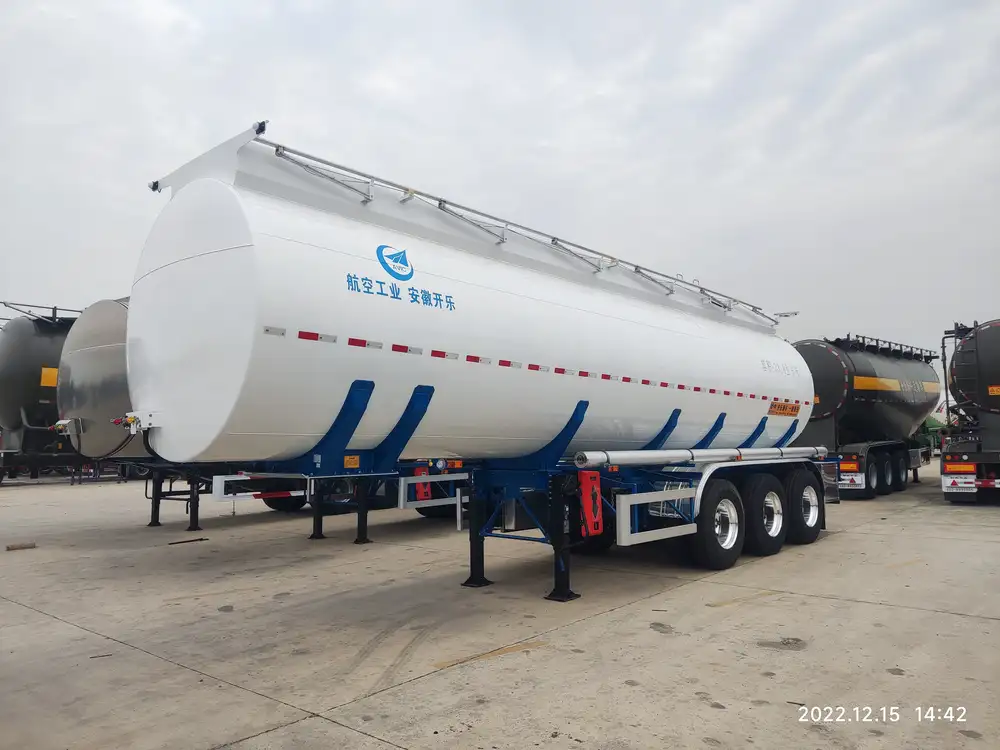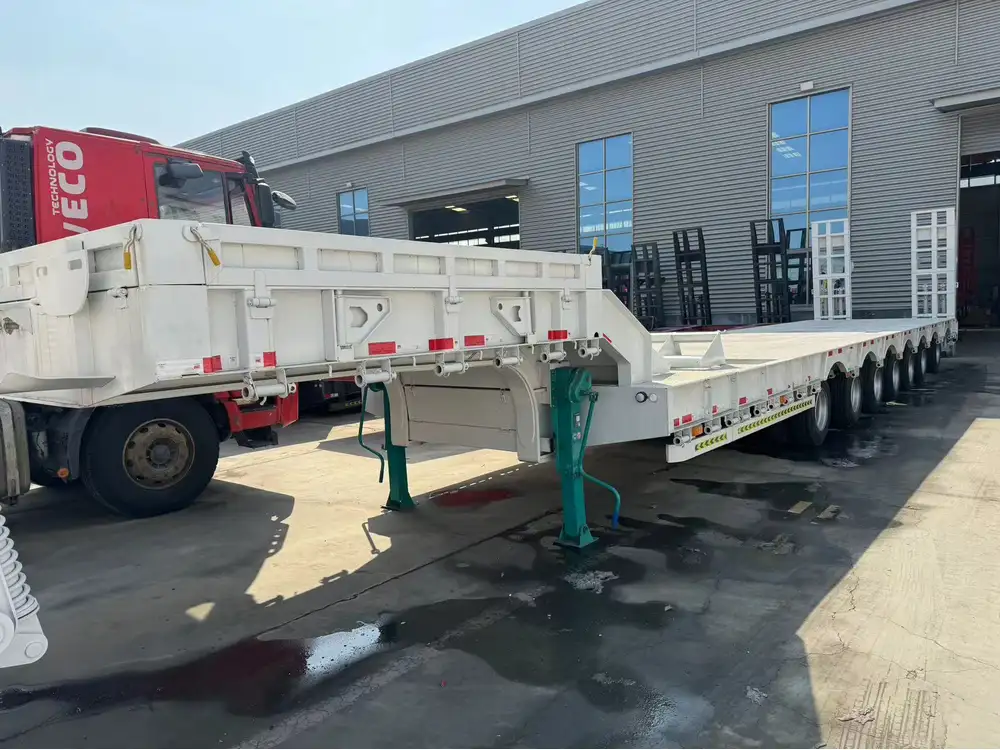In the realm of freight transportation, the seamless integration of different transport modes is paramount. Loading a semi-trailer onto a railcar is a vital operation that allows for efficient intermodal shipping. The procedures involved in this task can be intricate, requiring knowledge, precision, and the right equipment. This guide is designed to equip you with all the necessary information to execute this operation effectively.
Understanding the Basics of Intermodal Transport
Intermodal transport refers to the use of more than one mode of transportation to move goods. It is a common practice among shipping companies due to its efficiency and cost-effectiveness. Below are key components of intermodal transport:
| Component | Description |
|---|---|
| Railcars | Container cars or flatbeds designed to carry cargo and semi-trailers. |
| Semi-Trailers | Enclosed units that transport goods, often loaded onto flatbed railcars. |
| Loading Equipment | Specialized machinery such as cranes, loading ramps, and forklifts used for loading operations. |
Key Considerations Before Loading
Before initiating the loading process, it is essential to take several factors into account:

1. Railcar Specifications
Understanding the type of railcar you will use is crucial. Common types of railcars for semi-trailers include:
- Flatcars: Ideal for heavy loads and offer flexibility in loading arrangements.
- Well Cars: Specifically designed for double stacking containers and are also suitable for semi-trailers.
2. Semi-Trailer Specifications
Take note of the semi-trailer’s dimensions, weight distribution, and load capacity. This information is necessary for ensuring compliance with transport regulations and the safe operation of loading equipment.
3. Loading Gear
Employing the right gear is essential. Common equipment includes:
- Loading Ramps: Designed specifically to facilitate the smooth transition of a semi-trailer onto the railcar.
- Cranes and Forklifts: For lifting and positioning trailers as required during the loading process.

4. Safety Protocols
Establishing safety protocols is fundamental. Ensure that all personnel are briefed on best practices, and safety equipment such as helmets, gloves, and safety goggles are used throughout the process.
Step-by-Step Process for Loading a Semi-Trailer on a Railcar
Step 1: Prepare the Loading Area
Before starting the loading operation, ensure that the loading area is clear of any obstacles. Confirm that the railcar is positioned correctly on the loading dock, and the semi-trailer is aligned with the railcar.

Step 2: Use Equipment Appropriately
Set up the loading equipment, including ramps. Verify that they are securely anchored to both the ground and the railcar. Before the trailer approaches, conduct a thorough inspection of the loading equipment.
Step 3: Position the Semi-Trailer
With the help of a tractor unit:
- Back the semi-trailer towards the loading ramp.
- Ensure that the trailer is aligned with the railcar’s loading area.
Step 4: Secure the Semi-Trailer Connections
Once positioned, the tractor unit should be disengaged from the trailer. Inspect all connecting mechanisms (such as safety pins and latch systems) to ensure they are secure for transit.

Step 5: Manually or Mechanically Drive the Trailer onto the Railcar
This stage may vary depending on the available technology:
- Manual Loading: Use a loading ramp to carefully drive the semi-trailer onto the flatbed railcar. Ensure that the trailer is centered and is positioned far enough to maintain a stable equilibrium.
- Mechanical Assistance: Utilize cranes or forklifts when handling heavier or oversized trailers that are less manageable.
| Equipment Type | Usage Scenario |
|---|---|
| Ramps | Ideal for standard trailers and typical railcar setups. |
| Cranes | Best for oversized or additional weight trailers. |
| Forklifts | Practical for positioning smaller trailers and equipment. |
Step 6: Inspect the Loaded Semi-Trailer
After the trailer is positioned on the railcar, conduct a thorough inspection to verify:
- Stability and balance of the trailer on the railcar.
- Secure anchoring points and connections.
- Compliance with weight distribution standards (for safe rail travel).
Step 7: Finalize the Loading Process
Once everything is verified, secure the semi-trailer to the railcar using appropriate tie-downs or straps. Document the loading process, including taking pictures for reference, ensuring all parties involved have a mutual understanding of the operational details.

Safety Practices During Loading
To maintain a safe loading environment, consider implementing these essential practices:
- Traffic Management: Use signage to control the movement of vehicles and personnel during loading operations.
- Personal Protective Equipment (PPE): Ensure that all workers wear appropriate PPE, including hard hats, gloves, and non-slip footwear.
- Regular Communication: Maintain constant communication among loading personnel to mitigate the risk of accidents or errors.
Potential Hazards and Mitigation Strategies
| Hazard | Description | Mitigation Strategy |
|---|---|---|
| Slips and Falls | Unstable surfaces and improper footwear lead to accidents. | Ensure all surfaces are clear and use non-slip footwear. |
| Overloading | Exceeding weight limits can lead to railcar failure. | Regularly verify weight distribution before loading. |
| Equipment Failure | Malfunctioning cranes or ramps may cause accidents. | Conduct pre-operation inspections on all gear. |
Post-Loading Procedures
After successfully loading the semi-trailer onto the railcar, there are several post-loading procedures to follow:

1. Document the Loading
Record the details of the loading process, including:
- Date and time of loading
- Trailer and railcar identification numbers
- Personnel involved in the loading
- Weight and dimensions of the semi-trailer
2. Notify Relevant Parties
Ensure that the shipping department, transportation manager, and destination handlers are informed of the loaded trailer’s specifics.
3. Compliance Checks
Confirm that the loaded semi-trailer complies with all regulatory requirements. This may include weight limits, securing protocols, and transport documentation.

4. Execute the Transit Process
Prepare for the transit by confirming rail schedules, routes, and any scheduled stops. This ensures timely and cost-effective freight delivery.
Common Questions About Loading Semi-Trailers on Railcars
1. What is the maximum weight a semi-trailer can safely transport on a railcar?
The maximum allowable weight depends on the railcar design and specifications. Most often, regulations stipulate a limit of around 20,000 to 30,000 pounds for a loaded semi-trailer, but it’s essential to check local regulations and rail carrier requirements.

2. Is loading a semi-trailer on a railcar dangerous?
Like any heavy equipment operation, loading a semi-trailer onto a railcar presents safety risks. However, adhering to safety protocols, proper training, and using equipment correctly can substantially diminish these dangers.
3. Can I load different types of trailers onto a railcar?
While flatcars can accommodate a variety of semi-trailers, specific designs may restrict the type of trailers. Always check with the rail service provider for guidelines on compatible trailer types.
4. How do I prepare a semi-trailer for loading onto a railcar?
Before loading, ensure the trailer is properly serviced, with checks performed on brakes, tires, and the load itself. Secure contents to minimize shifting during transit.

Conclusion
Effectively loading a semi-trailer onto a railcar is a multi-step process that demands precision, the right equipment, and adherence to safety protocols. Understanding not just the ‘how,’ but also the ‘why’ of each step is crucial for ensuring the efficiency and safety of freight operations. By following this comprehensive guide, firms engaging in intermodal transport can enhance operations, reduce risks, and achieve seamless service delivery. Providing thorough training for staff and staying abreast of industry best practices will further facilitate successful logistics management.



